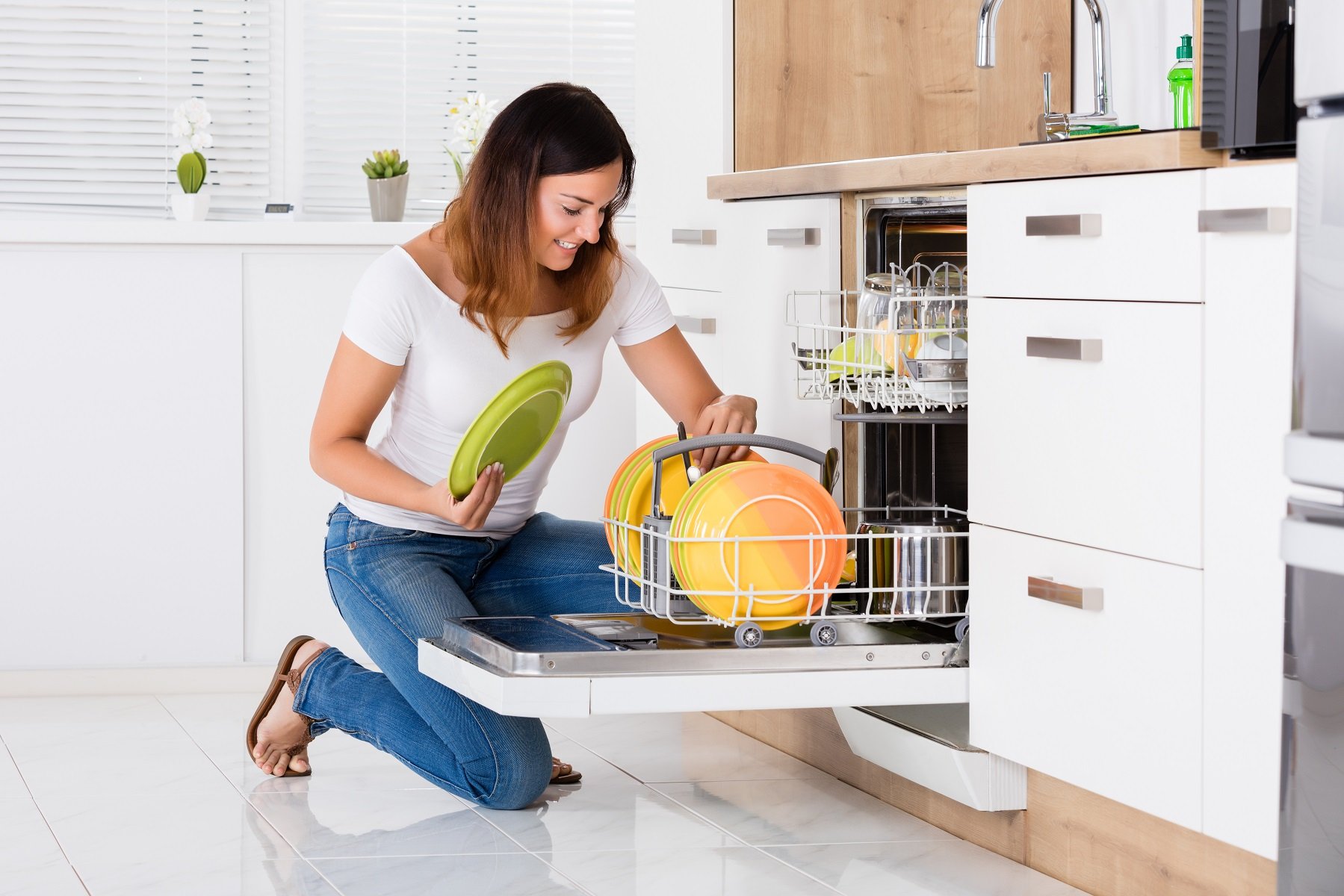
The dishes are all spot-free and clean as can be. Now, what about the dishwasher? Yes, it might seem strange that the thing whose job is washing dishes needs its own cleaning from time to time. Learn how to tackle the nasty dishwasher smells with these 5 step-by-step cleaning instructions and helpful tips to get your dishwasher cleaner.

These handy machines need routine cleaning just like your other kitchen appliances. That's because the door attracts fingerprints every time you load it with dirty dishes, and the interior (especially the corners and crevices) accumulates residue comprised of food particles, grease, and soap scum. Not only do these deposits look bad, they eventually begin to make your dishwasher stink because of bacteria that thrives in warm, moist, and dark places. The best way to stay on top of your dishwasher cleanness is a monthly cleaning can keep your dishwasher looking like new and running well.
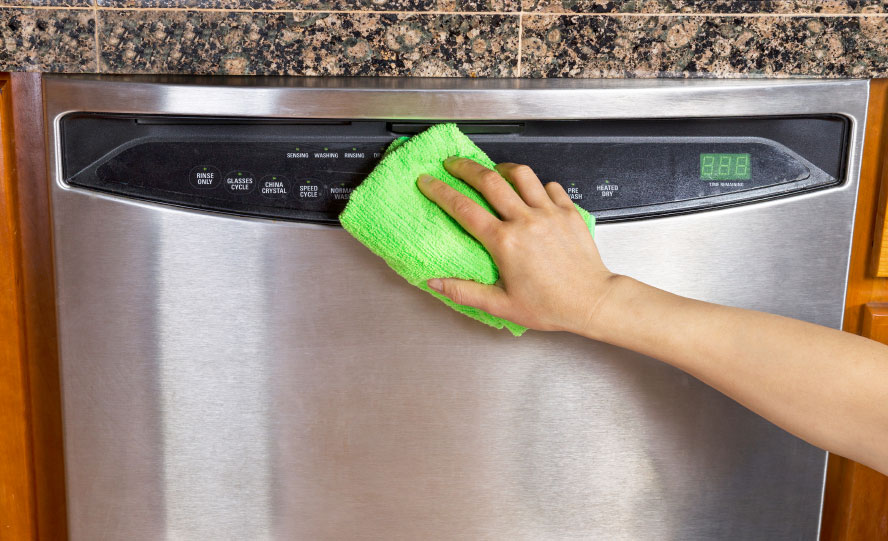
Step 1: Clean the Door
Keep the dishwasher door fingerprint-free by wiping the outside with warm, sudsy water. Or, use a homemade dishwasher cleaner. Mix 1/4 cup baking soda with 1 quart of water. Avoid harsh cleansers or too-tough scouring pads that might scratch the dishwasher's finish. When the door is clean, wipe it dry with a soft cloth. Wipe away tricky fingerprints and smudges with a little rubbing alcohol on a soft, dry cloth.
Open the dishwasher door so you can get at its top and sides. Dip a small toothbrush in hot, soapy water, and scrub around the door. Make sure you dig into the grooves of the rubber seal and any other crevices, including the hinges. Wipe up the resulting grime with a household sponge dipped in hot soapy water. Wipe away any cleaning solution left behind with a clean, wet sponge.

Step 2: Clean the Tub
Before you start cleaning the tub, use a handful of paper towels to grab any debris from the base of the dishwasher. Once the debris is removed, you'll want to run a cycle to clean the dishwasher. (It should be run empty.) You can use one of several DIY dishwasher cleaners. Then run a full cycle, choosing the hottest water possible to disinfect the unit while it's being cleaned. When the cycle is done, wipe out the inside of the dishwasher with paper towels or a clean, dry cloth.
Here's how to clean a dishwasher with vinegar: simply set a dishwasher-safe cup of plain white vinegar on the top rack. In place of vinegar, you can either put a packet of unsweetened lemonade mix in the soap cup or sprinkle a cup of baking soda on the bottom of the tub. Reminder, always run a complete cycle using the hottest water possible. Each will help clean and freshen your dishwasher.
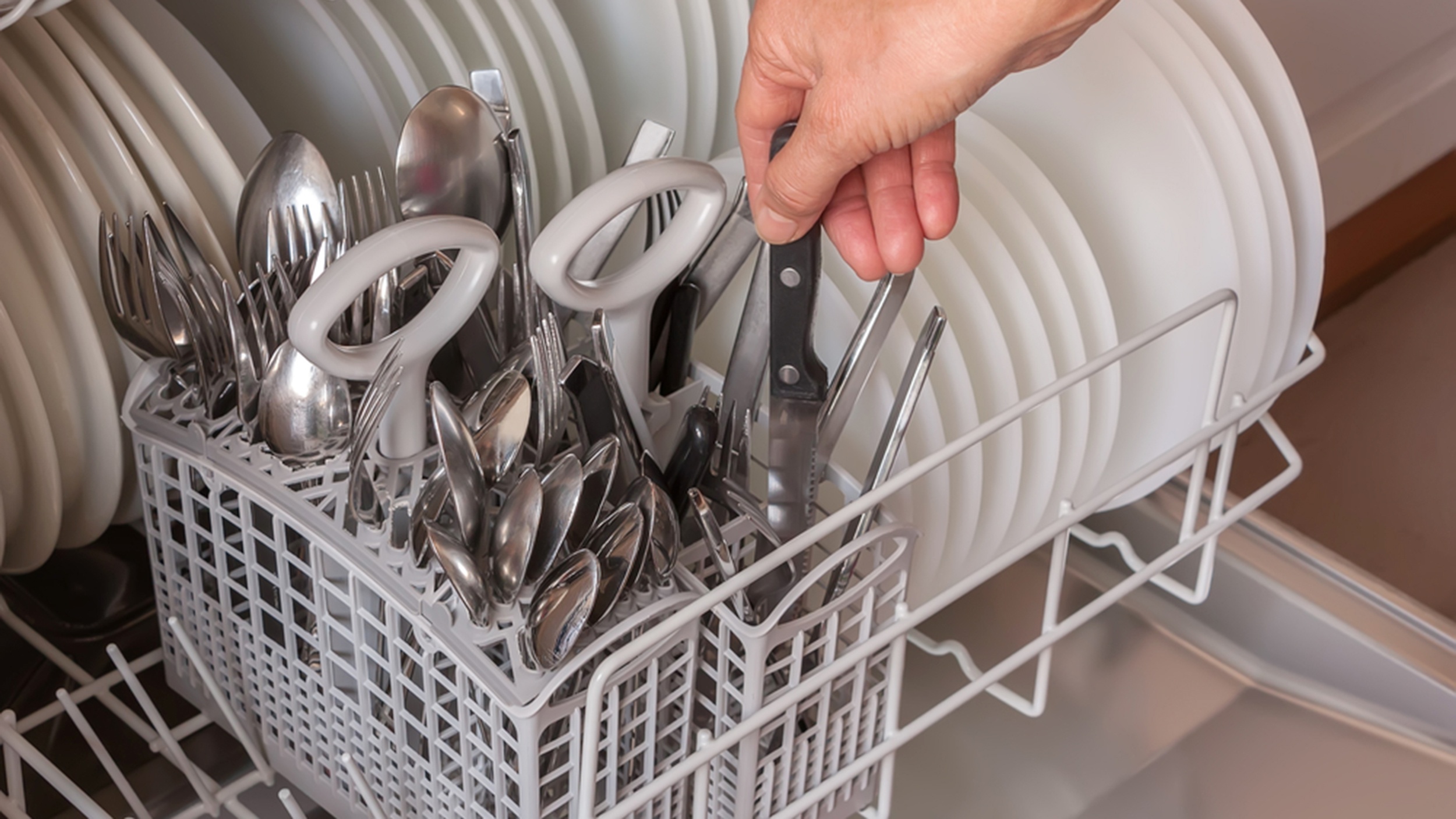
Step 3: Clean the Accessories and Parts
Next, clean the dishwasher accessories and parts. Take out the racks and utensil holders. Wipe off any stuck-on food particles or other debris. Scrub the spray arm with a soft brush or toothbrush to remove clogs.
Filters vary greatly from dishwasher to dishwasher. Refer to your owner's manual for specific instructions on how to clean your dishwasher filter. (Don't have the manual? Many manufacturers have them available on their websites.) If your filter is removable, take it out of the dishwasher and rinse under hot running water to remove food particles and other debris.
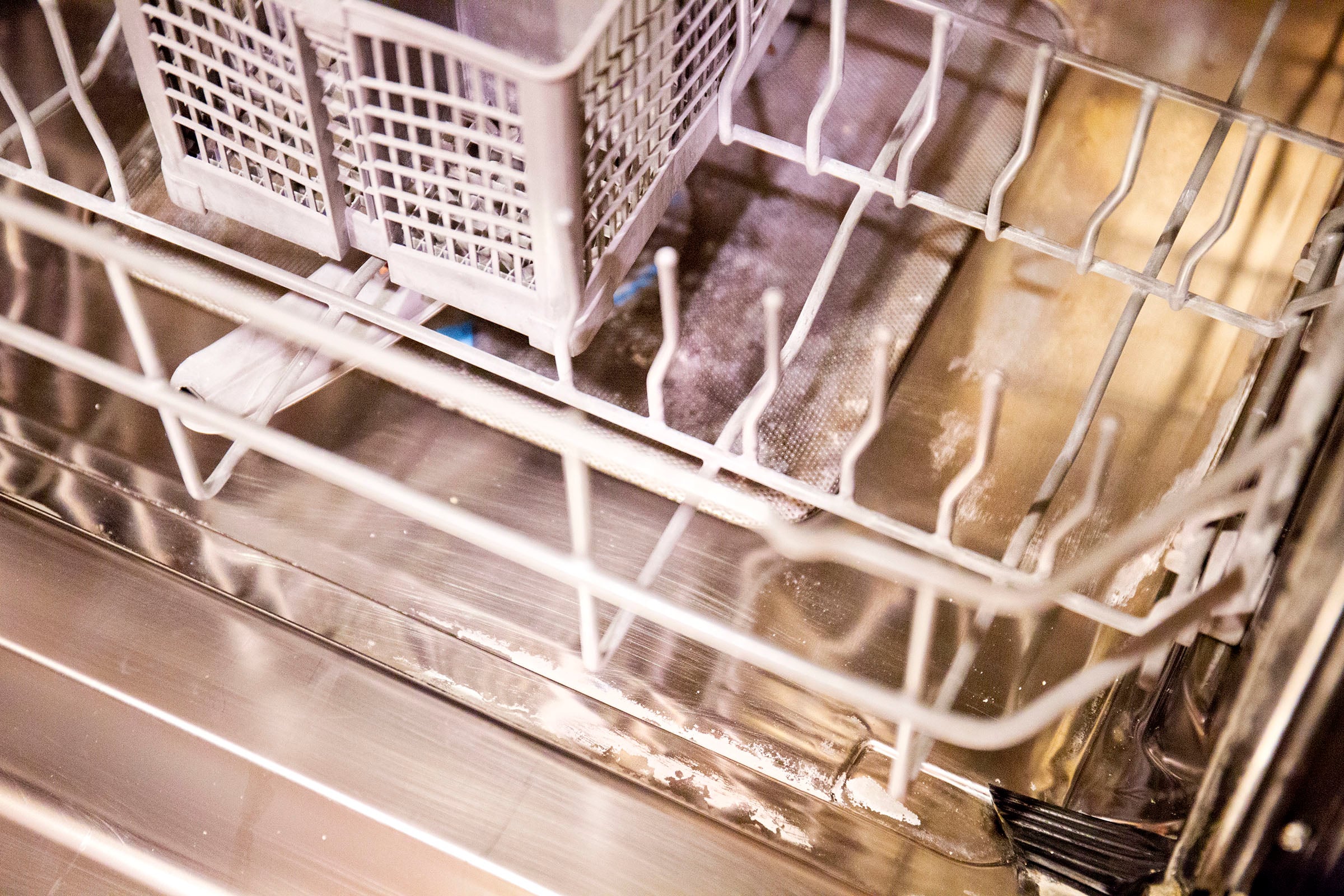 Step 4: Tackle Rust Stains
Step 4: Tackle Rust Stains
Depending upon your water source and the state of your pipes, you might see mineral or rust stains inside your dishwasher. Check the laundry detergent section of your home center for products that remove rust stains from clothing or appliances. Place the product into the soap dispenser cup in your dishwasher and sprinkle some freely on the bottom. Run the empty dishwasher through a complete cleaning cycle.
Since the source of rust stains is systemic (e.g. your water comes from a private well or your home's pipes are rusty), you will likely need to repeat this process on a regular basis unless you take care of the problems at their source. You might also want to ask a plumbing contractor to install a filter that can help with rust control.
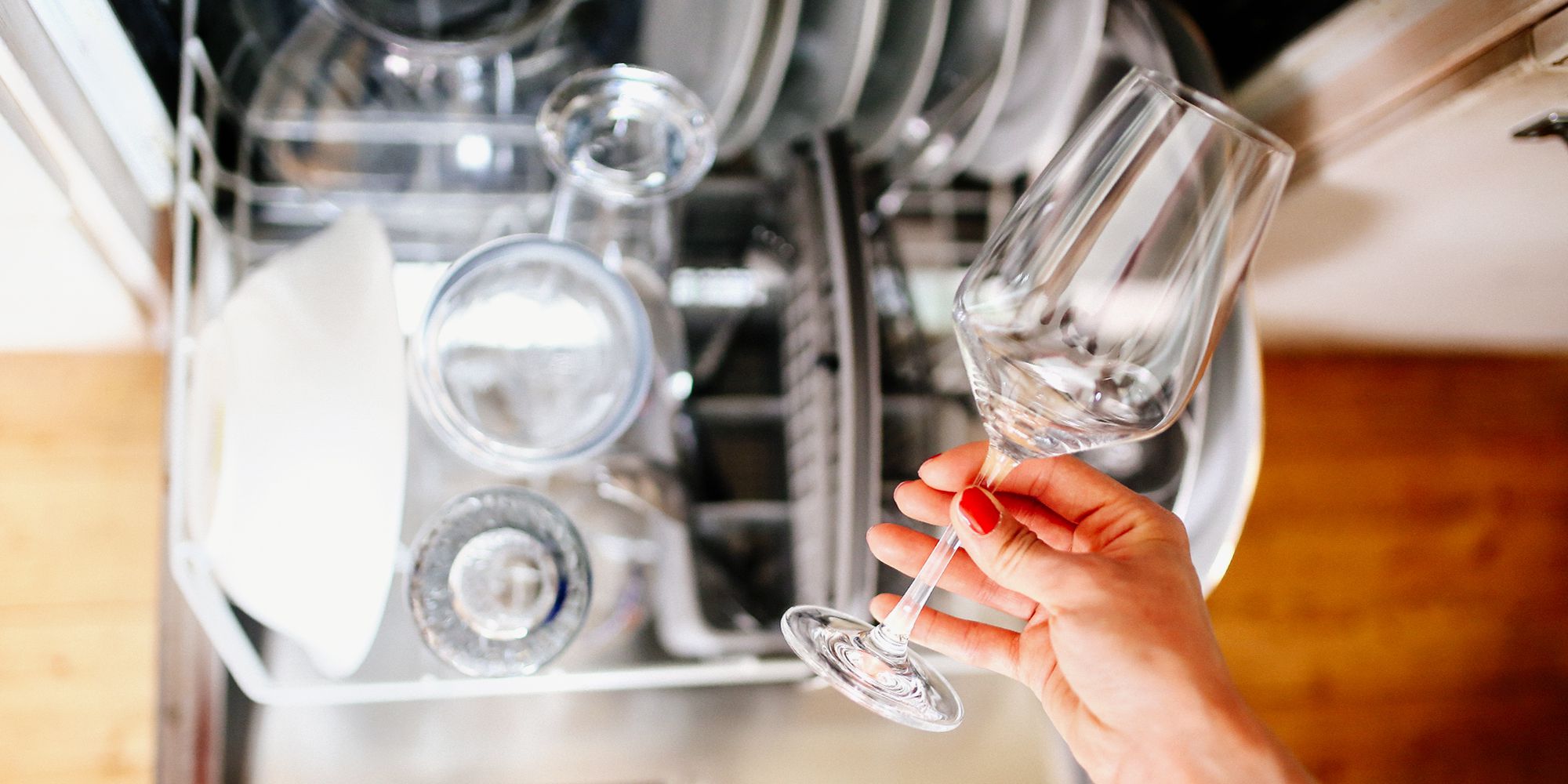 Step 5: Eliminate Hard Water and Mineral Buildup
Step 5: Eliminate Hard Water and Mineral Buildup
Depending on the type of water you have, your dishwasher may be susceptible to hard water deposits or mineral buildup. Like with the vinegar method, a cup of lemon juice can work wonders. Place a cup of lemon juice in the top rack or basket of your dishwasher and run a normal cycle. The acidic lemon juice will work to remove hard water spots and iron buildup.
The best way to clean a dishwasher is by doing a thorough cleaning once a month and tackling smudges and splatters on the exterior as they happen.
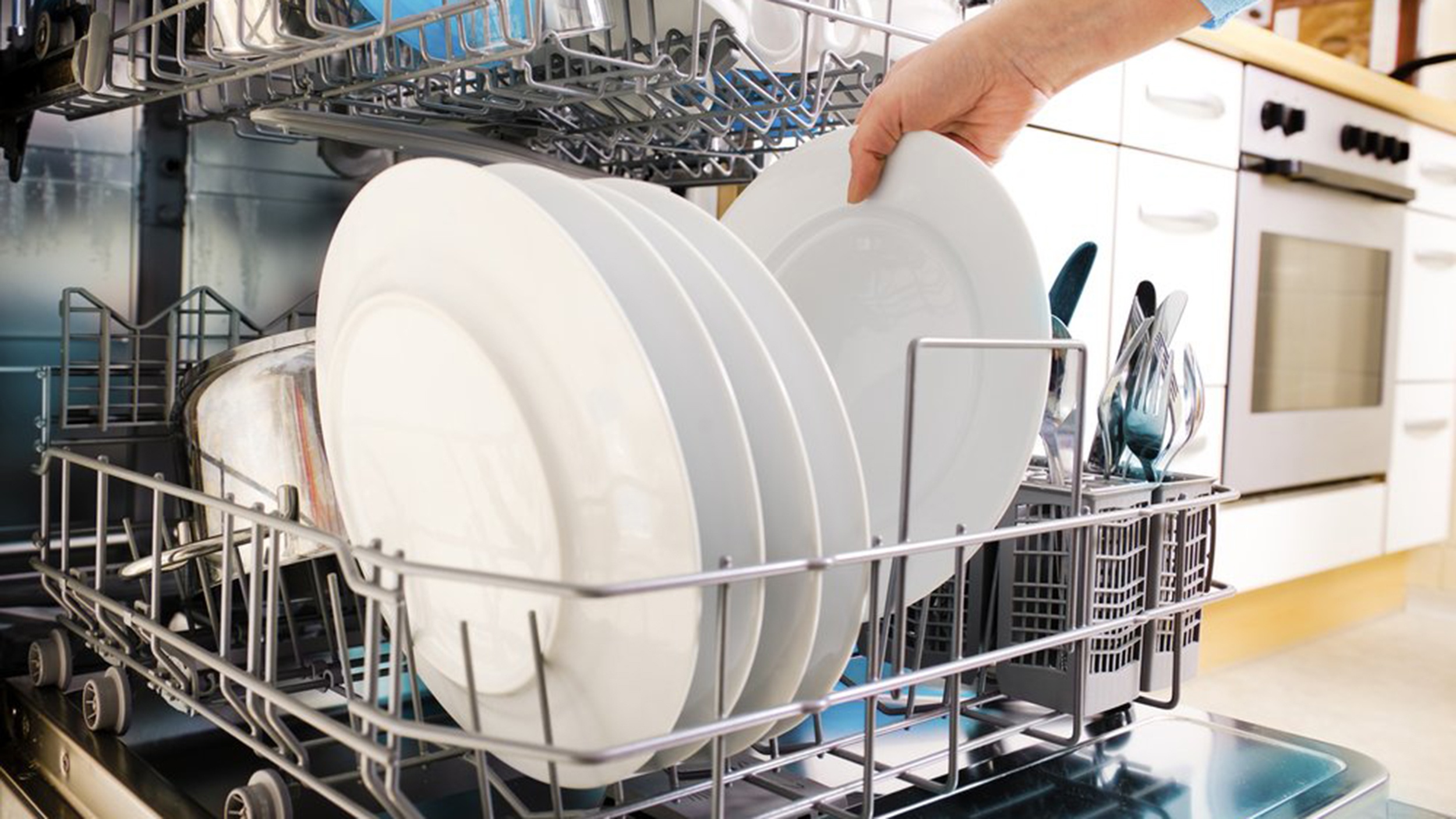 Everyday Dishwasher Cleaning Tips
Everyday Dishwasher Cleaning Tips
Have a few minutes to spare? Try these game-changing cleaning hacks to keep your dishwasher running and looking-its absolute best on a daily basis.
- Get rid of grime that just won’t budge: An old toothbrush can help you reach even the smallest cracks and crevices.
- While loading utensils, face half of them upward and the other half downward. This keeps them separated for a more complete clean.
- Get into those hard-to-reach openings in the spray arm with a thin, sturdy wire.
- Prevent spots on glassware by refilling the rinse-aid dispenser once a month.
Following these steps closely will guarantee an impressively clean appliance. (Doing a happy dance at the sight of your fresh-scented, newly shiny dishwasher is optional.)
Do you have any hacks you'd like to share? Share with us!









Leave a comment